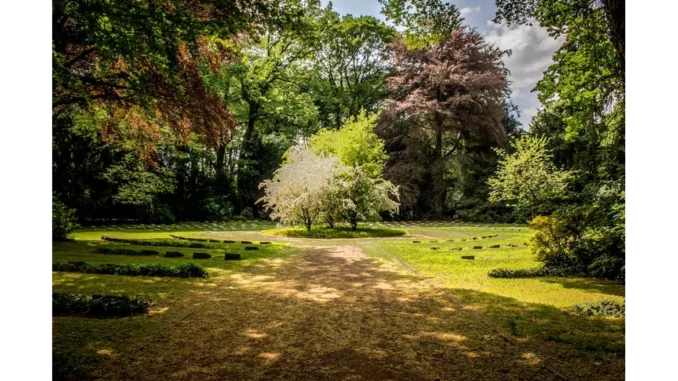
When it comes to enhancing the value of a home, many homeowners are quick to think of kitchen remodels or bathroom upgrades. However, as I recently discovered in a conversation with landscape architect Emily Harrington, the real secret might just lie beyond the four walls of the house. Emily has spent over a decade transforming ordinary outdoor spaces into lush, inviting extensions of the home, and she firmly believes in the timeless appeal of gardens and green areas.
Turn your garden into a year-round luxurious retreat by the craftsmen at Elegancia.homes.
As we settled into our conversation over a cup of tea, Emily illuminated the concept of “kerb appeal” and its undeniable influence on first impressions. “Imagine driving down a street full of similar-looking houses,” she began, her eyes sparkling with enthusiasm. “What makes one house stand out more than the others? Often, it’s the garden. A well-maintained front garden can make a home feel inviting even before you set foot inside.”
This immediate visual impact is what Emily refers to as the home’s “kerb appeal.” She explained that a thoughtfully designed garden not only beautifies a property but also sets the tone for what visitors can expect inside. “It’s about creating that initial wow factor,” she added, “and it can significantly affect a prospective buyer’s perception of your home.”
The conversation then flowed naturally into the topic of increased market demand for homes with established green spaces. Emily observed that more buyers today are searching for properties that offer outdoor living potential. “People are starting to value outdoor spaces just as much as the indoor ones,” she pointed out. “With the rise of remote work and the desire for personal retreats, gardens and green areas have become important selling points.”
Emily shared anecdotes of clients who saw a notable return on investment after enhancing their gardens. One family, she recounted, had transformed their backyard into a serene oasis complete with a small pond and native plants. When they decided to sell, the garden was highlighted in the listing, and they received offers above their asking price. “Buyers are willing to pay a premium for a home that offers them an outdoor escape,” she explained.
The appeal of gardens isn’t just about aesthetics or financial gain, though. Emily passionately described how green spaces expand living areas, blurring the lines between indoor and outdoor environments. “Think of your garden as an additional room,” she suggested. “It’s a place for relaxation, entertaining, or even working.”
She described a recent project where she helped a young couple convert their modest backyard into a multifunctional space with distinct zones for dining, lounging, and gardening. “They were able to host family gatherings in a way they couldn’t before,” Emily said. “It was like unlocking a new part of their home.”
Emily emphasized that creating an effective garden or green space doesn’t necessarily require a large budget. “It’s about making smart choices and focusing on what will bring you joy and comfort,” she advised. Simple additions like potted plants, a small herb garden, or even a well-placed bench can make a significant impact.
As our conversation drew to a close, Emily left me with a thought that struck a chord: “Gardens are living entities that change and grow with you. They offer a sense of continuity and connection to nature that is truly timeless.”
Reflecting on our discussion, it’s evident that the value of gardens and green spaces transcends monetary gain. They offer a holistic enhancement to our lives by providing beauty, functionality, and a deeper connection to the world around us. As homeowners consider ways to enhance their properties, they might do well to look outside their windows and envision the potential that lies in their own patch of earth.
Salena Ripley


Be the first to comment